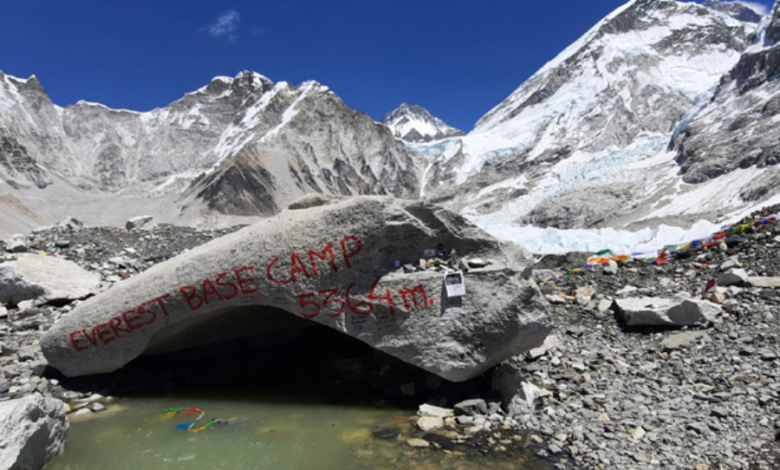The Most Common Mistakes to Avoid on Everest Base Camp

Embarking on the trek to Everest Base Camp is a remarkable achievement, but it requires careful preparation and awareness to avoid common mistakes that could hinder your experience. One of the most frequent errors is underestimating the physical demands of the trek. Many trekkers mistakenly believe that their fitness level is sufficient without realizing the specific challenges posed by high altitudes and strenuous terrain. To mitigate this risk, it is crucial to undertake targeted physical training that simulates trekking conditions and includes endurance and strength exercises.
Another common mistake is neglecting proper acclimatization. Rapid ascent without allowing the body to adjust to the altitude can lead to acute mountain sickness, which can be severe and even life-threatening. It is essential to follow a well-structured itinerary that incorporates rest days and gradual elevation gains. Rushing the trek in an attempt to reach the destination quickly only increases the risk of altitude-related issues.
Inadequate gear and equipment can also pose significant challenges. Many trekkers fail to bring appropriate clothing and gear suited for the harsh Himalayan weather. Waterproof, windproof, and insulated clothing, along with quality trekking boots and a reliable sleeping bag, are vital. Improper gear not only affects comfort but can also lead to health issues such as hypothermia or frostbite.
Hydration and nutrition are often overlooked aspects of preparation. EBC Trekking at high altitudes increases the body’s need for fluids and energy. Trekking companies may provide meals, but it is still important to stay hydrated and maintain a balanced diet, including high-energy snacks. Dehydration and poor nutrition can exacerbate altitude sickness and overall fatigue.
Additionally, not being mindful of environmental responsibility can lead to unintended negative impacts on the region. Many trekkers are unaware of the importance of minimizing waste and adhering to local environmental guidelines. Carrying out all trash, using designated waste disposal facilities, and following “Leave No Trace” principles are crucial for preserving the pristine environment of the Everest region.
Failing to communicate effectively with your trekking company can also lead to misunderstandings and unmet expectations. Ensure clear communication regarding your needs, concerns, and any special requirements you might have. This includes confirming the details of your itinerary, understanding the services provided, and being aware of any potential additional costs.
Lastly, not preparing mentally for the trek can affect your overall experience. The Everest Base Camp trek can be physically and emotionally demanding, and maintaining a positive mindset and readiness for the challenges ahead is crucial. Mental preparation helps in dealing with the inevitable discomforts and uncertainties of the trek.
By addressing these common mistakes and preparing thoroughly, trekkers can enhance their experience, ensure their safety, and fully enjoy the breathtaking journey to Everest Base Camp.
Introduction: Why Avoiding Mistakes is Crucial
Avoiding mistakes on the Everest Base Camp trek is crucial for ensuring a safe and enjoyable experience. The trek to Everest Base Camp, situated at an altitude of 5,364 meters (17,598 feet), presents unique challenges that require careful planning and preparation. Common mistakes can lead to a range of issues, from health problems to diminished enjoyment of the trek. Missteps such as neglecting acclimatization, overpacking, or underestimating the trek’s difficulty can have serious repercussions, potentially jeopardizing your safety and success. By being aware of and avoiding these common pitfalls, trekkers can better navigate the demanding conditions, manage the high altitude, and ensure that the journey is as rewarding as possible. Effective preparation helps in mitigating risks, enhancing overall trekking experience, and allowing trekkers to fully appreciate the stunning landscapes and personal achievement associated with reaching Everest Base Camp.
Underestimating the Trek’s Difficulty
Underestimating the trek’s difficulty is a common mistake that many first-time trekkers make when preparing for Everest Base Camp. The trek is physically demanding and involves walking long distances each day, often on rugged and uneven terrain. Additionally, the high altitude presents a significant challenge, as the air contains less oxygen, making even simple tasks more exhausting. Trekkers who do not fully grasp the trek’s demands may find themselves unprepared for the physical and mental strain involved. It is essential to recognize that Everest Base Camp is not a leisurely hike but a strenuous expedition that requires adequate preparation. Ensuring proper training, understanding the physical challenges, and having realistic expectations about the trek’s difficulty can prevent undue strain and increase the likelihood of a successful and enjoyable journey. Proper preparation includes conditioning your body to handle extended treks and acclimatizing to higher altitudes, which helps in managing the trek’s inherent difficulties.
Ignoring Acclimatization Needs
Ignoring acclimatization needs is a critical mistake that can jeopardize your health and overall trekking experience on the Everest Base Camp trail. Acclimatization is the process by which your body gradually adjusts to the reduced oxygen levels at high altitudes. Failing to allow adequate time for acclimatization increases the risk of altitude sickness, which can manifest as headaches, nausea, and even severe conditions like high-altitude pulmonary edema (HAPE) or high-altitude cerebral edema (HACE). To minimize the risk, it is crucial to follow an itinerary that includes rest days and gradual elevation gains. This approach helps your body adapt to the decreasing oxygen levels and reduces the likelihood of altitude-related illnesses. Trekkers should pay attention to symptoms of altitude sickness and be prepared to adjust their plans if necessary. Prioritizing proper acclimatization is essential for maintaining health and ensuring a successful and enjoyable trek to Everest Base Camp.
Overpacking or Underpacking
Overpacking or underpacking can significantly impact your Everest Base Camp trek, affecting comfort and efficiency. Overpacking leads to carrying unnecessary weight, which can make trekking more challenging and exhausting. Excessive gear not only burdens you physically but can also limit your mobility and increase the risk of injury. On the other hand, underpacking can leave you unprepared for the harsh weather conditions and various challenges of the trek. Essential items, such as appropriate clothing, medical supplies, and sufficient food and water, are crucial for maintaining health and comfort. It is important to strike a balance by packing only what is necessary and ensuring that you have all critical items. Packing lists should include high-quality trekking gear, weather-appropriate clothing, and essential personal items. Effective packing involves planning ahead, considering the trek’s demands, and ensuring that you are prepared for both expected and unexpected conditions. This careful packing strategy enhances your trekking experience and helps you manage the trek more effectively.
Neglecting Physical Preparation and Training
Neglecting physical preparation and training is a significant mistake that can severely impact your Everest Base Camp trek. The trek is physically demanding, requiring trekkers to walk long distances over several days, often on steep and uneven terrain. Without adequate physical conditioning, you may struggle with the trek’s demands, leading to exhaustion, discomfort, and a decreased enjoyment of the journey. Proper training should focus on building endurance, strength, and stamina, which are essential for handling the trek’s rigorous conditions. Incorporating cardio exercises, such as hiking, running, or cycling, and strength training exercises, such as weightlifting, can help prepare your body for the physical challenges ahead. Additionally, practice trekking with a loaded backpack to simulate the conditions you will face. By committing to a comprehensive training regimen, you can improve your fitness level, better manage the trek’s physical demands, and enhance your overall trekking experience, ensuring a more successful and enjoyable adventure to Everest Base Camp.
Ignoring Weather and Climate Conditions
Ignoring weather and climate conditions is a critical mistake when preparing for the Everest Base Camp trek. The weather in the Himalayas is highly unpredictable and can change rapidly, with temperatures dropping significantly at higher altitudes. Trekkers who do not prepare for these extreme conditions risk facing severe cold, snow, and rain, which can affect their health and safety. It is essential to stay informed about the weather forecast for the trek and pack accordingly with appropriate gear such as waterproof jackets, insulated layers, and windproof clothing. Understanding the seasonal weather patterns and preparing for varying temperatures can help you stay comfortable and avoid potential hazards. Being prepared for sudden weather changes also means carrying essential gear, such as a high-quality sleeping bag rated for low temperatures and a reliable tent if camping. By paying attention to weather and climate conditions, you can enhance your safety, comfort, and overall trekking experience.
Forgetting Essential Gear and Equipment
Forgetting essential gear and equipment can significantly impact your Everest Base Camp trek Cost, potentially leading to discomfort, health issues, or even failure to complete the trek. Essential gear includes items like trekking poles, a durable backpack, appropriate clothing layers, and a high-quality sleeping bag suited for cold conditions. Neglecting to bring these critical items can result in difficulties such as poor insulation against cold temperatures, inadequate support for long treks, or lack of necessary supplies for emergencies. It is crucial to create a comprehensive packing list and double-check that you have all required gear before departure. Many trekking companies offer gear rental options, but relying solely on rentals without verifying the quality and fit of the equipment can be risky. Investing in your own gear or ensuring that rented equipment meets high standards is vital for a successful and enjoyable trek. Proper preparation in this regard ensures that you are well-equipped to handle the trek’s challenges and enhances your overall experience.
Not Staying Hydrated and Properly Nourished
Not staying hydrated and properly nourished is a common mistake that can adversely affect your Everest Base Camp trek. High-altitude trekking increases your body’s demand for fluids and energy. Dehydration can exacerbate altitude sickness, leading to symptoms such as headaches, dizziness, and fatigue. It is essential to drink plenty of water throughout the trek, aiming for at least 3-4 liters per day. In addition to hydration, maintaining proper nutrition is crucial. Your diet should include high-energy, easy-to-digest foods to sustain your energy levels and aid in acclimatization. Meals provided by trekking companies usually include carbohydrates, proteins, and fats, but it’s wise to carry high-energy snacks like nuts and energy bars. Balancing hydration and nutrition helps in managing physical exertion and enhances overall well-being, ensuring that you remain physically capable of handling the trek’s demands and reducing the risk of altitude-related issues.
Failing to Budget for Unexpected Expenses
Failing to budget for unexpected expenses is a critical oversight that can affect your Everest Base Camp trek. While you may plan for the primary costs such as permits, guide fees, and accommodations, unexpected expenses can arise, including emergency medical costs, additional gear purchases, or extra days due to weather delays. It is advisable to allocate a contingency fund for unforeseen situations. This budget should cover potential emergencies such as medical evacuations, which can be costly, or unplanned expenses like purchasing necessary gear if yours fails or if weather conditions require additional equipment. By planning for these contingencies, you ensure that you are financially prepared for any surprises, reducing stress and allowing you to focus on enjoying the trek. Creating a comprehensive budget that includes a buffer for unexpected costs helps manage financial risks and supports a smoother, more enjoyable trekking experience.
Not Choosing the Right Trekking Company
Not choosing the right trekking company can significantly impact the success and enjoyment of your Everest Base Camp trek Weather. A reputable company ensures safety, provides experienced guides, and offers reliable support throughout the trek. A poor choice may result in inadequate support, poorly managed logistics, and insufficient safety measures. To choose the right company, research their reputation, experience, and customer reviews. Verify their safety protocols, including emergency response plans and equipment quality. Also, check that they provide a well-structured itinerary that includes adequate acclimatization days and offers a good guide-to-trekker ratio. Ensure that the company adheres to ethical practices and has clear terms regarding costs, cancellations, and insurance. By selecting a reputable and well-prepared trekking company, you enhance your chances of a successful and enjoyable trek, with proper support and guidance throughout the journey. This decision is crucial for managing the challenges of the trek and ensuring a memorable and safe experience.
Disregarding Safety Protocols and Guidelines
Disregarding safety protocols and guidelines is a significant mistake that can compromise the success and safety of your Everest Base Camp trek. Safety protocols are established to manage the risks associated with high-altitude trekking, such as extreme weather conditions, challenging terrain, and the physical demands of the trek. Key safety guidelines include adhering to proper acclimatization schedules, following instructions from guides, and using appropriate gear. Ignoring these guidelines, such as by pushing too hard without acclimatizing properly or neglecting to use safety equipment, increases the risk of altitude sickness, injuries, and other health issues. Safety protocols also encompass emergency procedures, including how to handle medical issues and evacuation plans. It is crucial to follow the advice and instructions of experienced guides and trekking company staff, who are trained to ensure your safety. By respecting and adhering to established safety protocols, you enhance your chances of a successful and secure trek, allowing you to focus on enjoying the breathtaking journey to Everest Base Camp.
Overexerting Yourself and Ignoring Warning Signs
Overexerting yourself and ignoring warning signs can lead to serious consequences during the Everest Base Camp trek food. The trek demands significant physical endurance, and pushing beyond your limits can result in exhaustion, injury, or altitude sickness. It’s important to listen to your body and recognize early symptoms of distress, such as dizziness, shortness of breath, or extreme fatigue. Ignoring these warning signs or continuing to trek despite feeling unwell can worsen the condition and potentially lead to severe health issues. Adhering to a pace that is comfortable and sustainable, taking regular breaks, and allowing for adequate rest are essential strategies for avoiding overexertion. It’s also crucial to monitor your acclimatization and adjust your itinerary if symptoms of altitude sickness arise. By respecting your physical limits and paying attention to warning signs, you can prevent serious complications and ensure a safer, more enjoyable trekking experience.
Underestimating the Importance of Mental Preparation
Underestimating the importance of mental preparation is a common oversight that can impact your Everest Base Camp trek significantly. The trek is not only a physical challenge but also a mental one, requiring resilience, patience, and a positive attitude. The harsh weather conditions, long days of trekking, and isolation can test your mental fortitude. Trekkers who do not mentally prepare may struggle with motivation, experience increased stress, and find it challenging to cope with the trek’s difficulties. Mental preparation involves setting realistic goals, developing a positive mindset, and preparing for the emotional and psychological aspects of the trek. Visualization techniques, mindfulness, and stress management strategies can help in building mental resilience. By understanding and preparing for the mental challenges of the trek, you enhance your ability to manage stress, stay motivated, and handle the demands of reaching Everest Base Camp effectively.
Mismanaging Altitude Sickness Symptoms
Mismanaging altitude sickness symptoms can have serious consequences during your Everest Base Camp trek. Altitude sickness, or acute mountain sickness (AMS), occurs when you ascend to high altitudes too quickly, leading to symptoms such as headaches, nausea, dizziness, and fatigue. Proper management of these symptoms is crucial to prevent them from escalating into more severe conditions like high-altitude pulmonary edema (HAPE) or high-altitude cerebral edema (HACE). Effective management includes recognizing early symptoms, adhering to gradual ascent plans, and taking appropriate measures such as resting, staying hydrated, and consuming high-energy foods. If symptoms persist or worsen, it is essential to descend to a lower altitude and seek medical assistance. Many trekkers underestimate the severity of altitude sickness and continue their ascent despite worsening symptoms, which can lead to dangerous health issues. By being proactive in monitoring and managing altitude sickness, you can ensure a safer and more enjoyable trek.
Not Respecting Local Culture and Customs
Not respecting local culture and customs can negatively impact your Everest Base Camp trek and the communities you encounter along the way. The trek passes through various Sherpa villages, where cultural traditions and practices are deeply valued. Disregarding these customs, such as failing to dress modestly, not removing shoes before entering homes or religious sites, or being disrespectful towards local practices, can cause offense and strain relations with local communities. It is important to educate yourself about the local culture, show respect for religious and cultural sites, and interact with the local people in a considerate manner. Engaging with local traditions and practices, such as participating in cultural ceremonies or learning about local customs, can enhance your trek experience and foster positive interactions. Respecting the local culture not only enriches your journey but also contributes to responsible and sustainable tourism, benefiting both you and the communities you visit.

